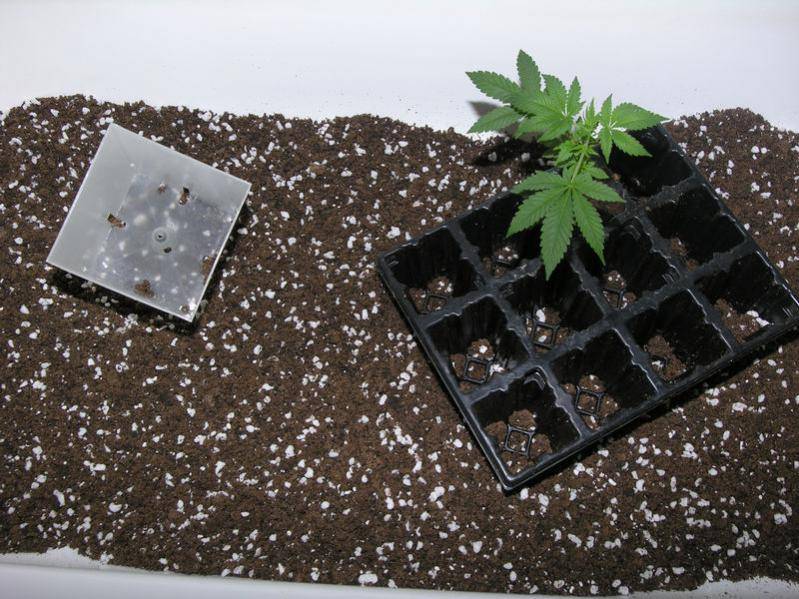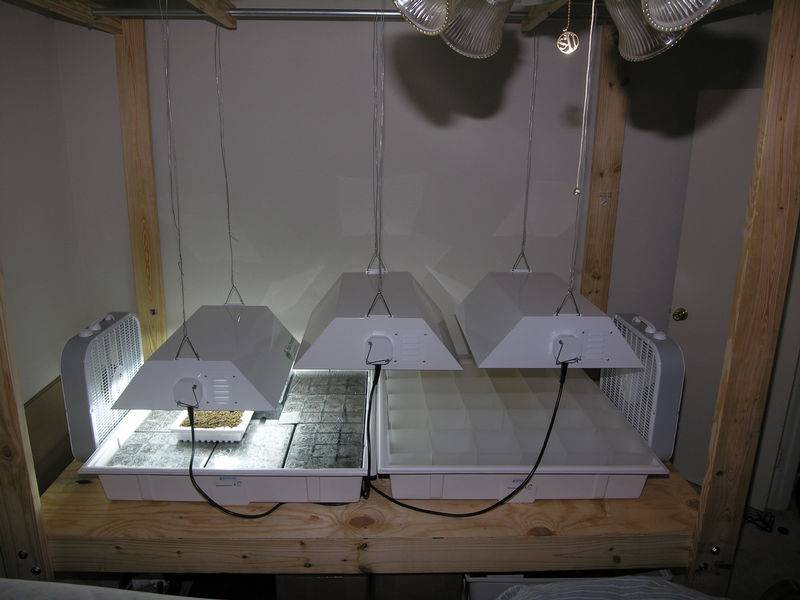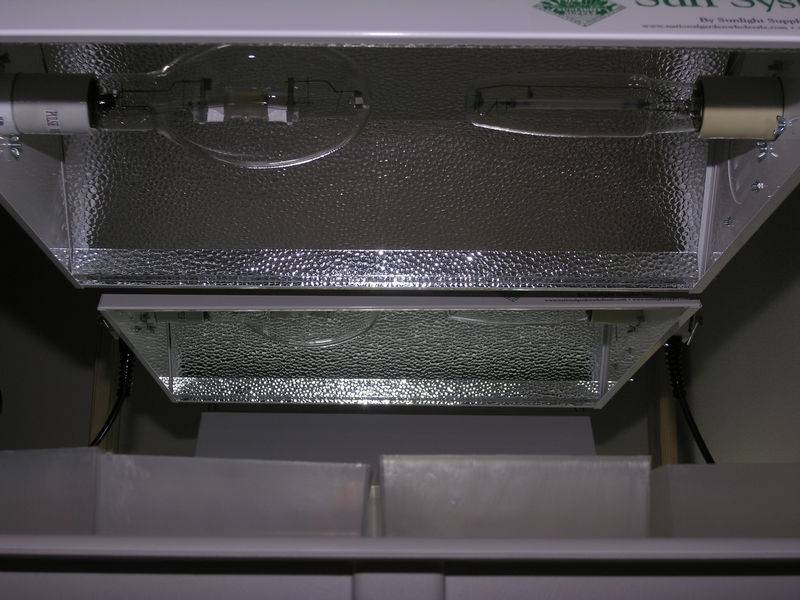Chilly Willy
Member
I never felt more alive! Coming back to this forum today showed me what I have been missing these past years. People here caring, staying in touch as you discover new things in this science, I even remember everyone wishing each other merry christmas on the day before. So I first wanted to remind my old, and new friends here how good it feels to be here.
I wanted to talk about the leaves response to the direction of the sun like seen in real life outdoors but accomplishing this indoors without light tracking. I feel that as close as we can get to mimicking the real situation the better the results will be. Having light reach the plant from different angles has to be a big bonus, and I did this by alternating HPS and MH using fixed position hoods just above the plants. Since the light bulbs were both located in each hood (26 x 22), the distance was never too great as to loose the full intensity of the sun on the canopy.
Having an area of 9ft. x 4ft., the placement of the three sun-system 7 hoods would reach down into the canopy about 12in.; which means I had to grab the clones and skip the vegetive stage as so the plants would not want to grow too tall. The 38 plants looked like rows seen in an outdoor farmer's crop, primarily growing concentrated on the tops instead of root and foliage mass.
The heliotropism was accomplished when the morning MH lights turned off after six hours from sunrise, and this is when the intense sun came out using the HPS for the last 6 hours of the day. I am not sure how much of a role heliotropism played in this grow, there were so many other details like introducing co2 at such a high level that it allowed me to run the room at a tropical temp (82 degrees instead of 78), having fans on timers so they would delay and let the co2 fall in the air towards the canopy, using soil that was cured under a tarp avoiding chemicals that normally are used to correct the ph, and the amount of time used in the cure. So I wanted to single out this one topic about how plants chase the sun as the day moves on, and how we can do this today using newer equipment.
The sun-system 7 is no longer available since it has been 15 years from that time. Since the bulbs under the 26 x 22 hood were staggered underneath the foil reflector, could it be possible to find a similar hood today? Maybe using lesser expensive equipment which are just plain simple smaller hoods, fixed above the canopy and placed close to one another which may also accomplish the same goal. I want to use equivalent of 400 watt bulbs and similar spectrums of light found in these older MH, and HPS bulbs. The height of the canopy will not exceed approx 18 inches, and the width, and length of this canopy will be different today as opposed to my last situation. A little smaller in length and width, approx six feet long, and a little over two and half feet wide.
I have pictures to show you from my last structure what I used to grow back in 2006, click on my bio to see the pictures (or I can just put the pictures here for you). There has to be an efficient way to accomplish what I am trying to achieve, and I wanted to hear any feed back my new and old friends will have on this situation. I am outdated by about 15 years, so I want to know what I have missed since new equipment has come out (both concerning newer spectrum lighting, and heliotropism).
This is my first topic for a thread since coming back here to icmag, so let me add some pictures that will get you as excited. These are our my first pictures and were really only intended to show what materials I was using; the set up was not used exactly as shown. My first grow with that equipment was situated on a 4ft. x 8 ft. piece of plywood, manually fed using the Botanical chart of nutrients, organic peat moss from a horticultural farm from the West Coast (kinda cool getting soil shipped to me), Rand 7" Air Cone pots, two Botanicare 4ft. x 4ft. trays with a single 1ft. x 4ft. Botanical tray in the middle of the two; allowing four more plants (totaling 38). A CAP Co2 Generator was placed at the end of this structure higher towards to the top near the ceiling, and fans alternated using CAP timers. When it was cold outside, I used a humidifier to keep things right indoors.
A small greenhouse was used to keep the 38 clones inside, using a meter to measure the amount of humidity, a spray bottle with water did the rest. Clones were placed in organic plugs from the same supplier of the peat moss I used. The plugs held tight around the stalks of the clones and had a 100 percent success rate during the three years of my experimentation. Harvesting was done approx 7 to 8 weeks after the clones were placed under the full spectrum lighting, this depended on when I uprooted them since often I picked at different times depending on which kind of head high I was looking to achieve (using a microscope to verify the color of the trichosomes). A crawl space dehumidifier was placed under the uprooted plants hanging from the ceiling as they dried for a day or so then placed inside quart size jars so they would cure for at least a couple of months.
I wanted to see what you guys thought about my methods back then, and what you would do different today. Man, I stayed up all night checking out old threads on this forum when we I use to hang out here. I had to call in at work and tell them I was sick, I guess what I am saying is I am all excited all over again like this is my first time. Thanks for welcoming me back! Can not wait to give a smoke report of this "one hit wonder". And what is so cool, is I grew it!!!! Here are the pics I promised...



CW

I wanted to talk about the leaves response to the direction of the sun like seen in real life outdoors but accomplishing this indoors without light tracking. I feel that as close as we can get to mimicking the real situation the better the results will be. Having light reach the plant from different angles has to be a big bonus, and I did this by alternating HPS and MH using fixed position hoods just above the plants. Since the light bulbs were both located in each hood (26 x 22), the distance was never too great as to loose the full intensity of the sun on the canopy.
Having an area of 9ft. x 4ft., the placement of the three sun-system 7 hoods would reach down into the canopy about 12in.; which means I had to grab the clones and skip the vegetive stage as so the plants would not want to grow too tall. The 38 plants looked like rows seen in an outdoor farmer's crop, primarily growing concentrated on the tops instead of root and foliage mass.
The heliotropism was accomplished when the morning MH lights turned off after six hours from sunrise, and this is when the intense sun came out using the HPS for the last 6 hours of the day. I am not sure how much of a role heliotropism played in this grow, there were so many other details like introducing co2 at such a high level that it allowed me to run the room at a tropical temp (82 degrees instead of 78), having fans on timers so they would delay and let the co2 fall in the air towards the canopy, using soil that was cured under a tarp avoiding chemicals that normally are used to correct the ph, and the amount of time used in the cure. So I wanted to single out this one topic about how plants chase the sun as the day moves on, and how we can do this today using newer equipment.
The sun-system 7 is no longer available since it has been 15 years from that time. Since the bulbs under the 26 x 22 hood were staggered underneath the foil reflector, could it be possible to find a similar hood today? Maybe using lesser expensive equipment which are just plain simple smaller hoods, fixed above the canopy and placed close to one another which may also accomplish the same goal. I want to use equivalent of 400 watt bulbs and similar spectrums of light found in these older MH, and HPS bulbs. The height of the canopy will not exceed approx 18 inches, and the width, and length of this canopy will be different today as opposed to my last situation. A little smaller in length and width, approx six feet long, and a little over two and half feet wide.
I have pictures to show you from my last structure what I used to grow back in 2006, click on my bio to see the pictures (or I can just put the pictures here for you). There has to be an efficient way to accomplish what I am trying to achieve, and I wanted to hear any feed back my new and old friends will have on this situation. I am outdated by about 15 years, so I want to know what I have missed since new equipment has come out (both concerning newer spectrum lighting, and heliotropism).
This is my first topic for a thread since coming back here to icmag, so let me add some pictures that will get you as excited. These are our my first pictures and were really only intended to show what materials I was using; the set up was not used exactly as shown. My first grow with that equipment was situated on a 4ft. x 8 ft. piece of plywood, manually fed using the Botanical chart of nutrients, organic peat moss from a horticultural farm from the West Coast (kinda cool getting soil shipped to me), Rand 7" Air Cone pots, two Botanicare 4ft. x 4ft. trays with a single 1ft. x 4ft. Botanical tray in the middle of the two; allowing four more plants (totaling 38). A CAP Co2 Generator was placed at the end of this structure higher towards to the top near the ceiling, and fans alternated using CAP timers. When it was cold outside, I used a humidifier to keep things right indoors.
A small greenhouse was used to keep the 38 clones inside, using a meter to measure the amount of humidity, a spray bottle with water did the rest. Clones were placed in organic plugs from the same supplier of the peat moss I used. The plugs held tight around the stalks of the clones and had a 100 percent success rate during the three years of my experimentation. Harvesting was done approx 7 to 8 weeks after the clones were placed under the full spectrum lighting, this depended on when I uprooted them since often I picked at different times depending on which kind of head high I was looking to achieve (using a microscope to verify the color of the trichosomes). A crawl space dehumidifier was placed under the uprooted plants hanging from the ceiling as they dried for a day or so then placed inside quart size jars so they would cure for at least a couple of months.
I wanted to see what you guys thought about my methods back then, and what you would do different today. Man, I stayed up all night checking out old threads on this forum when we I use to hang out here. I had to call in at work and tell them I was sick, I guess what I am saying is I am all excited all over again like this is my first time. Thanks for welcoming me back! Can not wait to give a smoke report of this "one hit wonder". And what is so cool, is I grew it!!!! Here are the pics I promised...
CW



